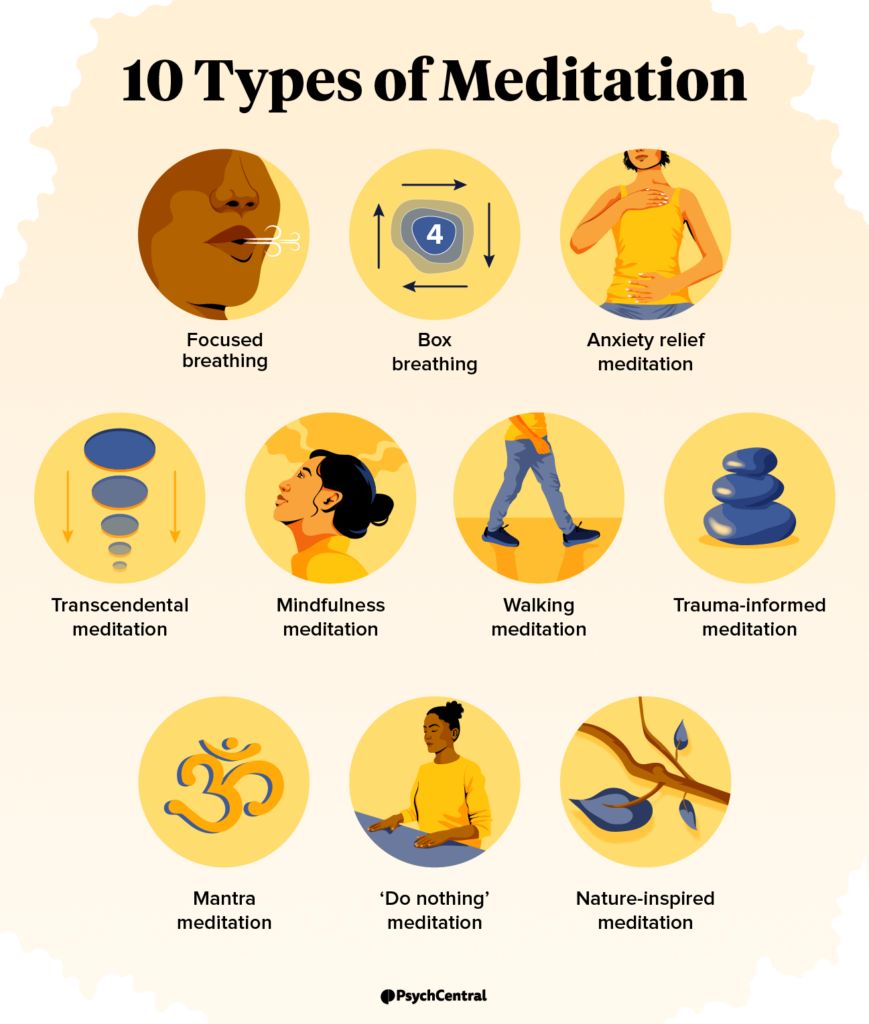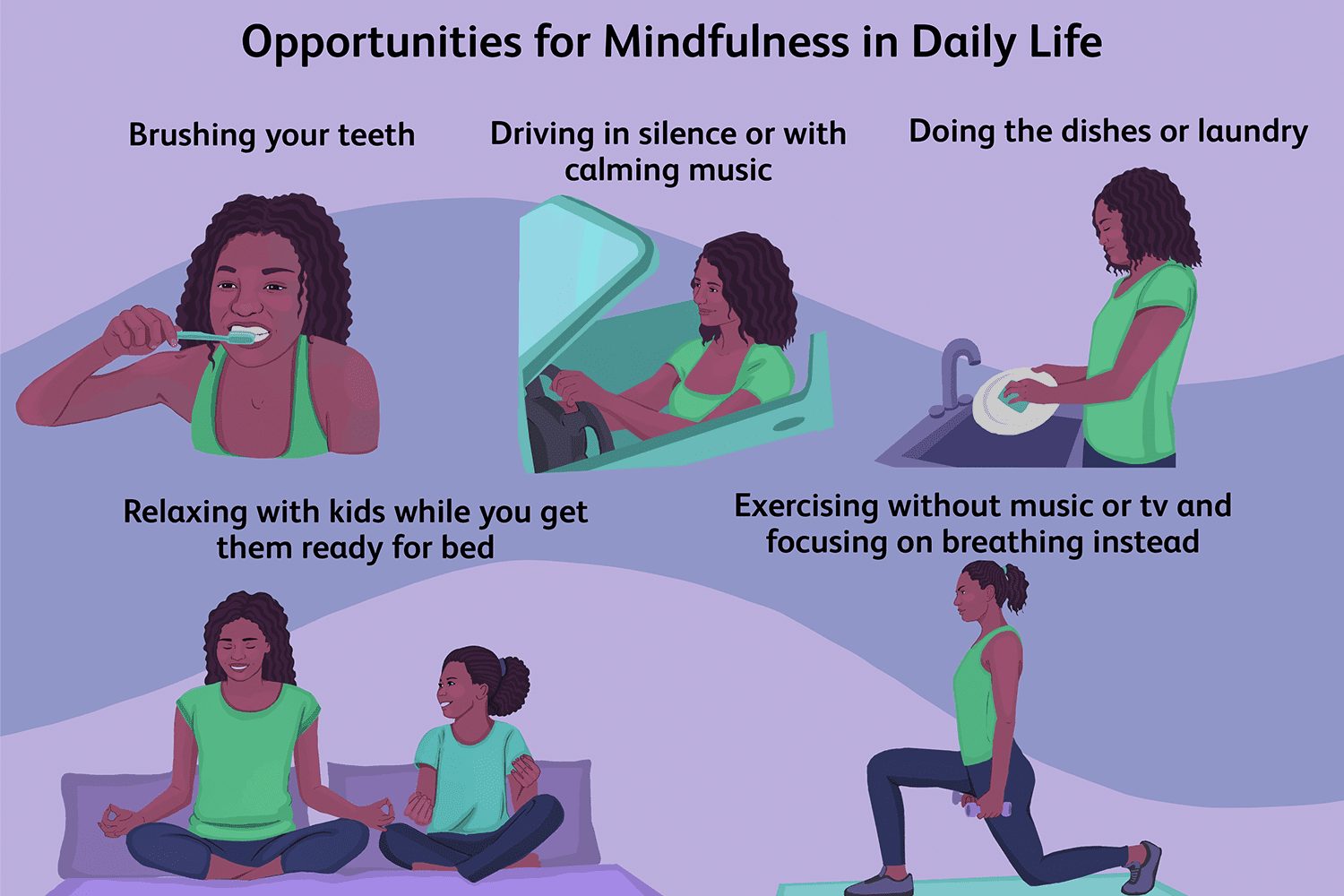Mindfulness meditation techniques focuses on present moment awareness and cultivating inner peace and calm. By practicing mindfulness meditation regularly, individuals can experience reduced stress and improved overall well-being.
It involves focusing on breath, body sensations, and thoughts without judgment. Incorporating mindfulness meditation into daily routine can bring about mental clarity and emotional resilience. It can be practiced anywhere, at any time, making it accessible for everyone seeking a sense of inner balance and harmony.
Embracing mindfulness meditation techniques can lead to a more centred and grounded mindset, promoting a deeper connection with oneself and the world around us.
Benefits Of Mindfulness Meditation
Mindfulness meditation has gained popularity in recent years due to its numerous benefits for overall well-being. It involves being fully present in the moment and accepting it without judgment. By consistently practicing mindfulness meditation techniques, individuals can experience a positive impact on their emotional well-being and cognitive function.
Improving Emotional Well-being
Mindfulness meditation plays a pivotal role in improving emotional well-being. By cultivating awareness of their thoughts and emotions, individuals can develop a greater sense of emotional control and resilience. This practice allows individuals to observe their thoughts without attaching judgment, leading to reduced anxiety and stress levels.
The benefits of mindfulness meditation on emotional well-being are supported by scientific studies. Research has shown that it can help individuals manage depression, reduce rumination, and enhance self-compassion. By practicing regular mindfulness meditation, individuals can foster feelings of contentment, happiness, and overall emotional balance.
Enhancing Cognitive Function
Mindfulness meditation is not only beneficial for emotional well-being but also enhances cognitive function. Regular practice has been found to improve attention span and increase the ability to focus. By training the mind to stay present in the moment, individuals can improve their concentration and productivity in various aspects of life.
In addition to attention and focus, mindfulness meditation also enhances cognitive flexibility. This refers to the ability to switch between different thought patterns and adapt to new situations. By practicing mindfulness meditation, individuals can improve problem-solving skills and effectively manage stress by approaching challenges with a fresh perspective.
Furthermore, research has demonstrated the positive impacts of mindfulness meditation on memory and learning. Regular practice has been associated with improved working memory and higher levels of cognitive functioning.
In conclusion, the benefits of mindfulness meditation are significant, ranging from improved emotional well-being to enhanced cognitive function. By incorporating mindfulness meditation techniques into daily life, individuals can experience a greater sense of peace, emotional resilience, and mental clarity.

Credit: psychcentral.com
Types Of Mindfulness Meditation
Mindfulness meditation encompasses various techniques that promote present-moment awareness and mental clarity. Exploring different types of mindfulness meditation allows individuals to find a practice that resonates with them and supports their mental well-being.
Breath Awareness
In breath awareness meditation, practitioners focus on their breath as a way to anchor their attention in the present moment. This technique involves observing the inhalation and exhalation without attempting to control or manipulate the breath.
Body Scan
The body scan meditation involves systematically paying attention to different parts of the body from head to toe. Practitioners observe any sensations or tensions present in each area, promoting a deeper connection to the body and relaxation.
Mindfulness Meditation Practices
Discover the transformative power of mindfulness through various meditation techniques that cultivate awareness and presence.
Walking Meditation
Engage in peaceful and deliberate steps with awareness, focusing on each movement and breath.
Loving-kindness Meditation
Cultivate empathy and compassion towards oneself and others through loving-kindness meditation practice.
Incorporating Mindfulness Into Daily Life
Incorporating mindfulness into daily life can be a transformative practice that promotes peace, self-awareness, and overall well-being.
One effective way to integrate mindfulness into our routines is through various techniques, such as mindful eating and mindful movement. These mindfulness meditation techniques provide opportunities to cultivate presence and attentiveness in our day-to-day activities, enhancing our overall experience of life.
Mindful Eating
Mindful eating is a simple yet powerful practice that encourages us to slow down and savor every bite, enabling us to fully appreciate the flavors, textures, and nourishment of the food we consume.
Instead of rushing through our meals or mindlessly eating while multitasking, practicing mindful eating involves paying full attention to our senses, engaging in deep appreciation for the food on our plate.
By being fully present in the act of eating, we can also better tune into our body’s hunger and satiety signals, fostering a healthier relationship with food. Here are a few tips to help you incorporate mindful eating into your daily routine:
- Sit down at a table, free from distractions such as phones or television.
- Take a few deep breaths to center yourself before you begin eating.
- Observe the appearance, aroma, and various colors of the food in front of you.
- Take small bites, chewing slowly and savoring each mouthful.
- Pay attention to the different sensations in your mouth and how the taste evolves as you continue to chew.
- Notice the feeling of fullness and stop eating when you feel satisfied, rather than finishing everything on your plate.
Mindful Movement
Another way to incorporate mindfulness into your daily life is through mindful movement, which involves engaging in physical activities with full awareness and attention to the sensations in our bodies.
Whether it’s practicing yoga, going for a walk in nature, or even doing household chores, mindful movement allows us to bring a heightened sense of presence to our movements, creating a deeper connection between our mind and body.
Here are some suggestions to help you infuse mindful movement into your everyday routines:
- Before starting any physical activity, take a moment to check in with your body and notice how you’re feeling.
- As you move, pay close attention to the sensations in your muscles, the rhythm of your breath, and the way your body moves through space.
- Avoid rushing through the activity; instead, set a slow and deliberate pace, allowing yourself to fully experience every movement.
- Notice any thoughts or distractions that arise, and gently bring your attention back to the physical sensations of the activity.
- Practice gratitude for your body’s ability to move and engage in the activity, cultivating a sense of appreciation for the present moment.
- After completing the activity, take a few moments to notice how your body feels, appreciating the energy and vitality that mindful movement has brought to your day.
Tips For Starting A Mindfulness Meditation Practice
Mindfulness meditation can be a powerful practice for bringing calm and balance into your daily life. Whether you’re new to meditation or looking to refine your practice, these tips for starting a mindfulness meditation routine can help you cultivate a deeper sense of awareness and peace.
Setting Realistic Goals
Setting realistic goals for your mindfulness meditation practice can help you stay motivated and committed. Begin with short, manageable meditation sessions, such as 5-10 minutes per day, and gradually increase the duration as you build consistency and comfort with the practice. By setting achievable goals, you can avoid feeling overwhelmed and sustain a regular meditation routine.
Creating A Consistent Routine
Establishing a consistent routine is essential for reaping the full benefits of mindfulness meditation. Identify a specific time and place for your meditation practice, whether it’s first thing in the morning or before bed. Consistency is key to forming healthy habits, so aim to meditate at the same time each day to integrate mindfulness into your daily routine.

Credit: www.pinterest.com

Credit: www.garrisoninstitute.org
Frequently Asked Questions On Mindfulness Meditation Techniques
What Are 5 Ways I Can Practice Mindfulness?
Practice mindfulness through meditation, deep breathing, body scan, mindful walking, and mindful eating. Mindfulness can also be cultivated through journaling and focusing on the present moment. Engaging in activities like yoga and tai chi can also help build mindfulness.
What Are The 4 R’s Of Mindfulness?
The 4 R’s of mindfulness are Recognize, Reframe, Relax, and Respond. Mindfulness involves acknowledging thoughts and emotions, shifting perspectives, calming the mind and body, and choosing how to respond thoughtfully.
How Do I Start Meditating Mindfulness?
To start meditating mindfulness, find a quiet place, sit comfortably, focus on your breath, notice sensations without judgment. Gradually increase duration & practice regularly.
What Are The 4 Steps Of Mindfulness?
The 4 steps of mindfulness are: 1. Awareness of breath or body sensations. 2. Acknowledging thoughts and emotions without judgment. 3. Bringing focus back to the present moment. 4. Cultivating compassion and acceptance towards oneself and others.
Conclusion
To sum up, practicing mindfulness meditation can have a profound impact on our well-being. By cultivating a moment-to-moment awareness, we can reduce stress, improve our focus, and enhance our overall mental and emotional state. Incorporating various techniques such as breath awareness, body scanning, and loving-kindness meditation can allow us to tap into a deeper sense of calm and self-awareness.
So, why not give mindfulness meditation a try and experience the transformative effects it can have on our lives?
